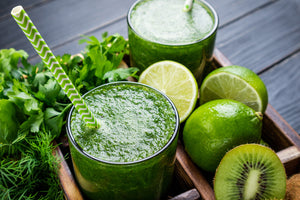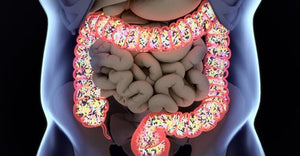Fall Food Feature – Winter Squash

With the weather getting cooler and fall in the air, the berries, tomatoes, peppers, and other summer produce at the farmers’ markets are giving way to hardier autumn crops. But this doesn’t mean your diet needs to become any less nutritious, or that you’ll have fewer fun recipes to try in the kitchen. The foods we enjoy when the days get shorter and the fallen leaves crunch underfoot hold just as much promise for health and cooking as the colorful bounty of summer.
One category of foods that has come in season is winter squash. With their bold orange and yellow interiors, which typically intensify with cooking, they practically scream autumn. Some of these squashes are available frozen year round, but there’s something about eating them in season that adds a cozy warmth to a chilly evening’s dinner.
Winter squashes can make a hearty, filling contribution to plant-based and omnivorous diets alike, and they’re also surprisingly versatile for people watching their carbohydrate intake. Some varieties are higher in carbohydrate than others, but all are good sources of fiber and nutrients, and even the ones that are slightly higher in carbohydrate still have a very low glycemic load. (This means you would have to consume a very large amount of them to have a significant impact on your blood glucose. But individual sensitivity varies.)
Butternut and hubbard squashes are high in beta-carotene and vitamin C; acorn squash is a good source of manganese and potassium. Spaghetti squash is lower in nutrients than the others, but it’s also the lowest in carbohydrates. Long before kitchen gadgets that turn zucchini into “noodles” came on the scene, veteran low-carbers were baking spaghetti squash and shredding the inside with a fork to create reasonable substitutions for pasta dishes. And, while acorn squash is the lowest in carbs, the other squashes are a far cry from fist-sized muffins and bottomless baskets of breadsticks. Per 100-gram serving, butternut, hubbard and acorn squash contain 10g, 11g and 15g of carbohydrate, respectively, compared to just 6g for spaghetti. Acorn squash provides 4g of fiber, for a “net carb” content of just 11g. Not bad at all! Winter squashes are low-to-medium density carbs. Ounce for ounce, they’re slightly higher in carbs than non-starchy vegetables, such as broccoli and spinach, but they’re far lower than denser sources, such as pasta.
A very easy—and popular—way to cook winter squash is to simply cut it in half, remove the seeds, and bake it until tender. Winter squash is a perfect match with some of the “warming” spices, such as cinnamon, cardamom and nutmeg. It seems almost required for Thanksgiving cookbooks to include a recipe for butternut squash paired with sage and/or thyme. And in case you needed permission to make squash even more delicious, it’s nutritionally beneficial to add some fat, such as butter, olive oil or coconut oil. The body can make better use of these squashes’ rich carotene content when they’re eaten with a little fat.
An interesting fact about at least one of these squashes—butternut—is that the carotenoid content increases during storage. Most vegetables and fruits are best consumed when fresh, since nutrients may degrade over time, or upon exposure to light, heat, or air after being picked. But it seems that a freshly picked butternut squash may have a lower carotenoid concentration than one that has been off the vine for a month or two. In addition to well-known beta-carotene, butternut squash is a good source of the carotenoid lutein, which is beneficial for eye health.
Winter squash is as versatile as it is delicious. It can be the star of both savory and sweet dishes. Here are a few ideas to get your culinary wheels turning and find new ways to bring these vegetables to the table, whether for dinner or dessert:
- Butternut squash soup
- Acorn squash with kale and sausage
- Curried acorn squash soup
- 20 Sweet butternut squash recipes
Sources
- David Brady







Comments 0